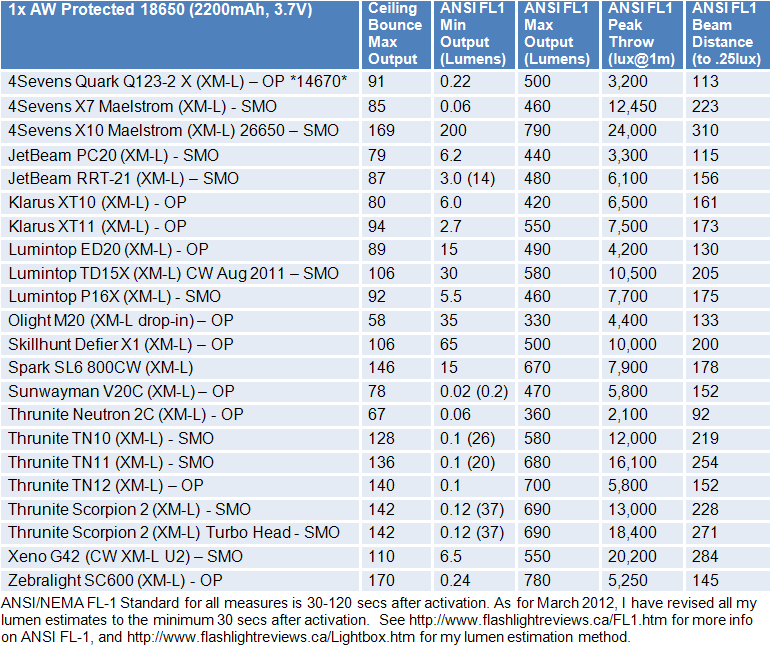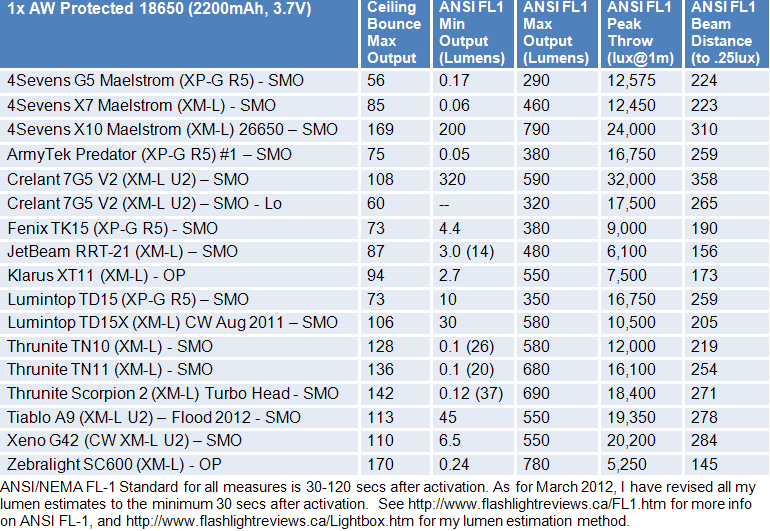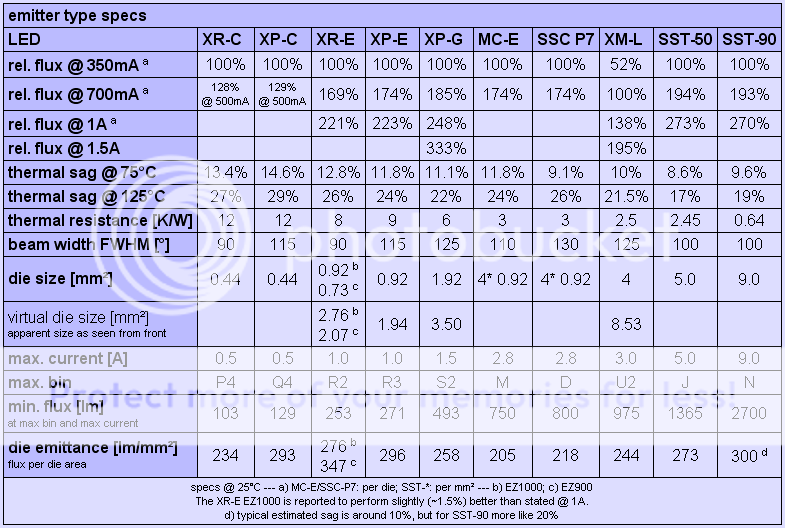HighlanderNorth
Flashlight Enthusiast
Right now I have 4 higher end LED flashlights, and a 5th on the way. I finally decided to buy the Lumapower D-Mini ex-2, after having bought the Zebralight SC600 instead about 5 weeks ago. So now I have 2 XM-L lights(ZL SC600 and Solarforce L2P with Thrunite 3 mode XM-L 9v drop in module). The Lumapower D-Mini ex-2 will also have an XM-L, but should be more of a thrower than the SC600, which is one reason I'm buying it.
The other 2 lights I have run on an XP-G R5(Jetbeam BC-10) and a CM-E(iTp A6 Polestar). I have read how a smaller diameter LED emitter equals more throw, unless the larger diameter LED emitter is set in a MUCH larger reflector. That explains why my SC600 is such a floody light(but its really bright).
But today I was reading a post here where a person was asking about whether he should get a module with an XP-E or an XM-L, and which one would give better throw in a certain size reflector. He was told to buy the XP-E, even though it isnt as bright, it supposedly would be more of a thrower.
When I looked at the XP-G(R5) vs. the XP-E(R2), they seem to be about the same size, and from the little info and specs I read, they also seem to be pretty similar in power potential(both around 300L).
I'm thinking of buying the Fireworm(dumb name) F1 Ti, but the one thing that originally turned me off, was that it uses an XP-E R2, and I initially thought that LED must be very outdated, since it only runs at 240L on high with an 18650, but now I'm not sure what the deal is with the XP-E, as the XP-G is pretty darn good!
So, what is the difference, and which do you prefer? I assume, just by going in alphabetical order that the XP-E must have come out 1st...
The other 2 lights I have run on an XP-G R5(Jetbeam BC-10) and a CM-E(iTp A6 Polestar). I have read how a smaller diameter LED emitter equals more throw, unless the larger diameter LED emitter is set in a MUCH larger reflector. That explains why my SC600 is such a floody light(but its really bright).
But today I was reading a post here where a person was asking about whether he should get a module with an XP-E or an XM-L, and which one would give better throw in a certain size reflector. He was told to buy the XP-E, even though it isnt as bright, it supposedly would be more of a thrower.
When I looked at the XP-G(R5) vs. the XP-E(R2), they seem to be about the same size, and from the little info and specs I read, they also seem to be pretty similar in power potential(both around 300L).
I'm thinking of buying the Fireworm(dumb name) F1 Ti, but the one thing that originally turned me off, was that it uses an XP-E R2, and I initially thought that LED must be very outdated, since it only runs at 240L on high with an 18650, but now I'm not sure what the deal is with the XP-E, as the XP-G is pretty darn good!
So, what is the difference, and which do you prefer? I assume, just by going in alphabetical order that the XP-E must have come out 1st...
Last edited:





